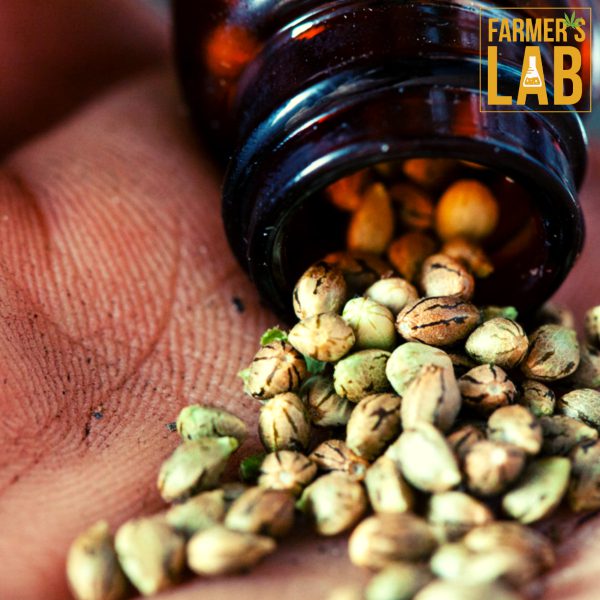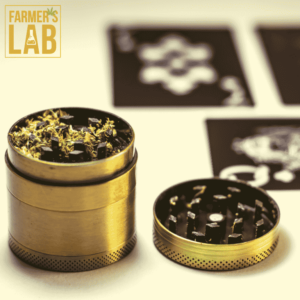
Nothing beats the high of having some fresh cannabis crop from the field whenever you want it. The best way of doing this is by implementing a system known as perpetual harvest in which you maintain a garden of the cannabis crop year round. The concept of perpetual harvest entails harvesting a little bit of the crop many times in the year rather than harvesting it all in one batch. Depending on how you set up your scheduled harvesting you can get fresh cannabis every month, biweekly, every week or any other interval you decide on.

Perpetual harvesting can be beneficial not only for the commercial grower but also the home grower. It makes it possible to control the growth and give the plants proper care in each phase of their growth. For commercial growers, it is easier to manage operations and even labor as you do not have to bunch up labor during harvesting and planting as you provide consistent work on regular harvesting and planting schedules
Indoor perpetual harvesting adopts an innovative horticultural system of design that seeks to maintain a consistent rotation of the crop across the dissimilar phases of the growth process. The different phases of growth that include flowering, vegetative and seedling need different photoperiods. As that each plant will require different durations of light thus necessitating separation according to the phase of growth.
Timing is the most important thing when you implement a perpetual harvest system. When the set of plants is out of the flowering stage and needs to be harvested, the vegetative plants will take their place. The crops moved from the vegetative phase will then have their place taken up by seedlings or clones. And as these seedlings or clones go into the vegetative phase, you will be adding more seedlings or clones to get more seeds thus having a revolving door like system.
Each phase of plant growth will require a dedicated space. Ensure each space is well protected from the light coming from the other space given that each stage has different light requirements. You also need to ensure that the amount of light that the plants get in each phase remains consistent throughout the growth phase. Moreover, if you use timers, ensure that you check them from time to time to ensure they are working as intended.
There is nothing worse than having plants receiving more or less light than is required for the phase they are in as this will disrupt their growth. If you give too little light to vegetative plants they will flower prematurely while flowering plants could become vegetative if they get too much light.
While seedlings and clones share the same photoperiod with vegetative light cycle plants, it is common practice among growers to separate them just because they need more close attention given their delicate nature.
The plants in this stage thrive in high humidity and warmth and will not need as much space as compared to the flowering and vegetative phase plants. Common practice is to have a closed off separate space for the plants or if space is wanting you can have them in the vegetative space.
Seedlings and clones need to have dedicated direct overhead light – I have found small T5 fluorescent bulbs to be perfect for the job. Always use heat pads underneath the clone trays for extra warmth and keep in the moisture by using humidity domes.
The vegetative phase requires less space than the flower space given that they tend to have smaller plants. T5fluoroscent lights are great for this stage though LEDs and HIDs may provide more explosive growth.
It is also recommended to have fans to provide sufficient airflow into the space during this phase.
During the flowering phase, you will need the largest space and the most powerful lights you can find. It is always best to keep the flowering and vegetative space far apart and away from the different lighting schemes. CFL, LED, HPS, and HID lights are among the best lights that will provide the energy and light that your plants need to become mature and start budding.
Plants in the stage also need a lot of clean air and hence you need to have fans inside as well as installing exhaust and inline fans that will bring air out and into the space. It would also be great to have fan filters.
Having a perpetual harvest year may not be the best fit for everyone. The system needs a lot of planning and time than your typical seasonal grow and needs one to put in work all year round. However, proper implementation of the system provides a lot of benefits.
You get to enjoy freshly harvested crop throughout the year. How often and how much will demand on the scale of the operation.
You do not have to suffer a huge workload as you spread it out over time. You will not need to get laborers for trimming the fall harvest when they are in high demand during peak harvest season.
It is easier to manage garden catastrophes. You can reset very easily and not have to lose a lot of valuable crops.
You get to enjoy better control over the plants in each of the growth phases.
Perpetual harvest systems need careful management and constant attention at every stage of growth. It is usually very hard to plan time away from your garden.
Some very good strains of cannabis are not fit for perpetual harvests – Some varieties have to have more space or more time which can make it hard to keep a steady flow of ready crop.
There are a variety of factors that could either make your perpetual harvest system successful or a complete failure. You will need a delicate balance when preparing and maintaining the different phases for the movement to the different growth phases. The following are some important tips when setting up:
It is very important to get the plants ready for the next step on time if you are to prevent the formation of a bottleneck. Since you will be having crops at different stages of growth, you need to have sufficient knowledge of each plant. Plants grow at different rates because of several factors that include:
Every cannabis crop will grow differently. Some varieties of cannabis will be lanky and tall while others are bushy and short. Certain varieties will also flower and mature later than others. It is important to have the information before you plant so that you can plan on how much space is needed and how to time the different stages especially if you intend to grow multiple strains.

Staggering plants in a perpetual system needs you to be keenly aware of each element in the process. Track how each growth phase is coming along by writing down:
a. The time when fresh clones are expected to sprout roots
b. Environmental factors such as light intensity, humidity, and temperature
c. Milestones in the vegetative growth phase
d. Plant training procedures and dates
e. Flowering times
f. Nutrient and watering schedules
g. Transplant dates
h. Troubleshooting including environment anomalies, deficiencies, and pest management


WE ARE EVERY GROWERS ONE STOP SHOP TO ACQUIRE PREMIUM CANNABIS SEEDS FOR SALE IN THE USA, CANADA AND AUSTRALIA
Farmers Lab Seeds 2024,
All Right Reserved
Seeds are sold as novelty items, souvenirs, and collectibles. They contain 0% THC. We encourage our customers to check the legislation in their Country, State, Province, and Municipality prior to purchasing items from our store. We do not provide growing information.
All seeds are sold as hemp, and lab tested under 0.3% THC. This product is not for use by or sale to persons under the age of 21. This product should be used only as directed on the label. It should not be used if you are pregnant or nursing. Consult with a physician before use if you have a serious medical condition or use prescription medications. A Doctor’s advice should be sought before using this and any supplemental dietary product. All trademarks and copyrights are property of their respective owners and are not affiliated with nor do they endorse this product.
These statements have not been evaluated by the FDA. This product is not intended to diagnose, treat, cure or prevent any disease. Individual weight loss results will vary. By using this site, you agree to follow the Privacy Policy and all Terms & Conditions printed on this site. Void Where Prohibited by Law.